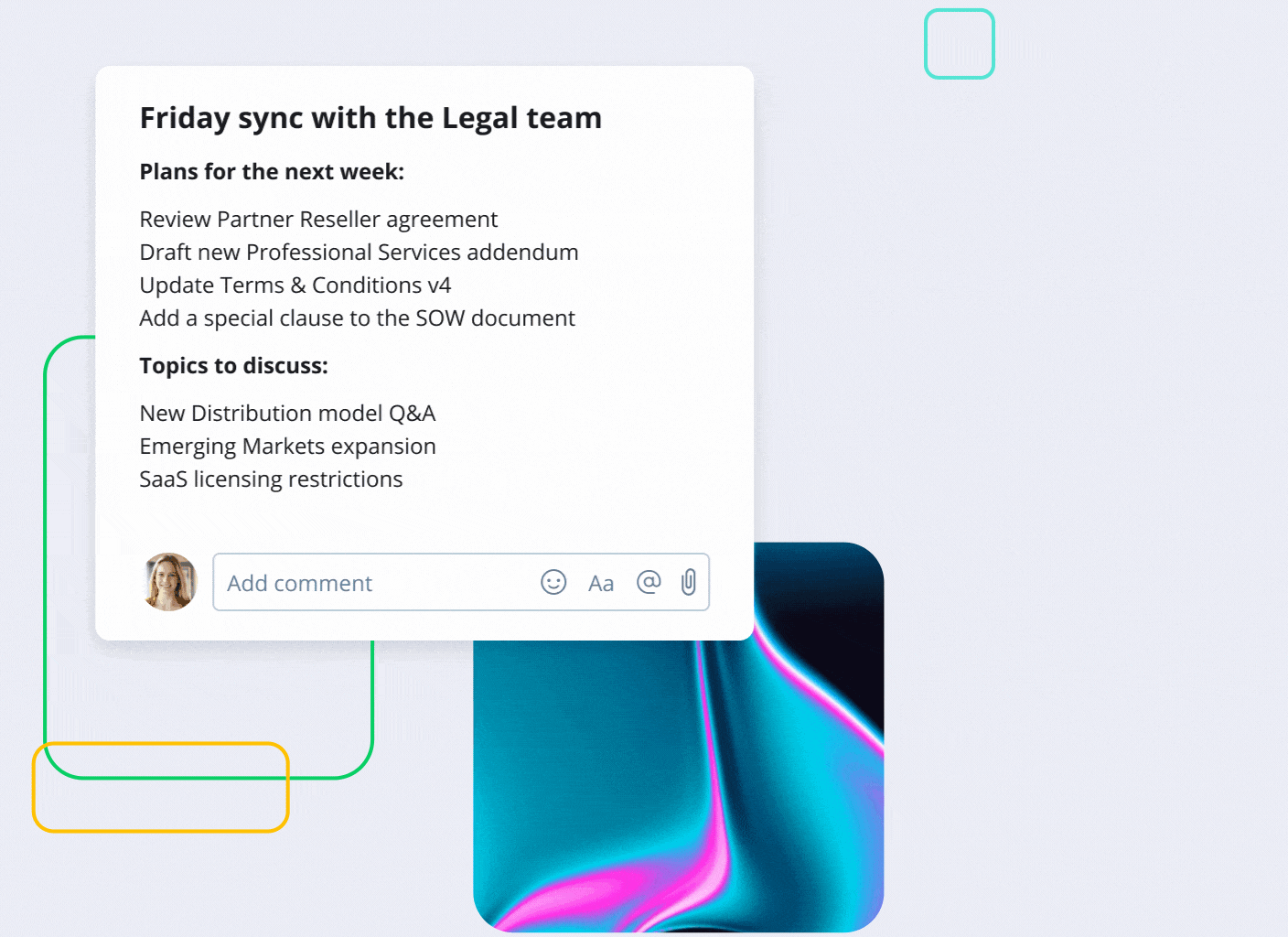The structure of your organization’s project management office (PMO) could be the difference between effective and ineffective project management. Therefore, your PMO structure must blend in with the organizational culture to ensure project management success.
To determine the best PMO framework for your company, you must first answer these questions:
- Do you often face bottlenecks in project management?
- Does your organization have a standard project management methodology for all projects?
- Does your organization run multiple projects simultaneously?
- What resources do you have for your project management office?
Once these questions are answered, you can easily align your strategy with execution for end-to-end success using work management software like Wrike. If you’re in charge of lots of projects, you can get a look at everything that’s going on and keep things running smoothly from the get-go.
Keep reading to see how the Wrike PMO solution can connect all the dots, all the way to rolled-up projects, programs, and portfolios.
What is a PMO structure?
A PMO structure is a group or department that defines and maintains project management standards within an organization. PMO can also stand for portfolio or program management office. The PMO oversees the metrics, benchmarks, quality, and documentation required for consistent project, program, and portfolio management and execution.
A PMO structure may be internal or external. The PMO is to a project management team what the SEC is to Wall Street; it provides the framework and organizational standards for managing and executing the projects under its governance.
Tip: Use Wrike’s templates to create different types of PMO structures that take into account all the unique features of your company, improving processes and driving end-to-end success.
What are the different types of PMO organizational structures?
There are several types of PMO organizational structures. Each company’s culture influences its PMO structure and how it evolves. Here are various project management office structures to be aware of:
Directive PMO
This PMO wields a lot of control. Directive PMOs manage projects by providing project management expertise and hands-on supervision. They set the standards for project management in the organization. Project managers report to the directive PMO.
Controlling PMO
Controlling PMOs have a moderate level of control. They create documentation, methodologies, templates, and frameworks for project managers to follow and ensure organizational standards for successful project management and execution.
Supportive PMO
This PMO acts as an organization’s project repository. They have little control and their role is mainly consultative. Their duties include sharing expertise, templates, training, and specific project information to help project managers achieve their goals.
There are other types of PMO structures based on organizational hierarchy. Some of these are:
Individual PMO
Individual PMOs are responsible for providing infrastructural and training support for single projects and programs. They set project management practices and standards and supervise project activities.
Business unit PMO
The business unit PMO structure, also known as a departmental PMO, is responsible for multiple projects within various assigned departments. It handles project and program management and reports to the division manager.
Enterprise PMO
The enterprise PMO structure exists in large enterprises. It oversees strategic project planning, resource allocation, project selection, project tracking, and prioritization. It also creates the standards, procedures, and methodologies for project management across departments.
The following PMO structures are based on organizational structure:
Decentralized PMO
This PMO structure acts more as an adviser to the project manager. It keeps project managers involved in decision making and the team in control of their tasks.
Centralized PMO
This PMO structure works in a more controlled manner. Unlike the decentralized structure, the PMO decides on project standards and processes and has a lot of authority around decision making and problem solving.
Ready to transform your PMO vision into reality? Build your unique PMO reporting structures in Wrike.
Example of a PMO organizational chart
With the help of a PMO organizational chart, your company can achieve all project goals and succeed in the face of turbulent market conditions and fluctuating business priorities.

PMO structure best practices
PMO organizational structures are an effective project management practice, benefiting many successful organizations within sectors such as IT, transportation, and education.
However, organizations outside of these fields can also implement PMO structure best practices to streamline project delivery and execute everything on time and within budget. These best practices include:
- Standardizing project management processes across departments
- Proper and precise documentation of project scope
- Reporting useful status information
- Acquiring skilled personnel with a good company culture fit
- Establishing a flexible project management process that reduces organizational risk
Tip: Use Wrike’s AI to transform rough notes into a task in seconds. Analyze your project plan or meeting notes, create a parent task, decipher actionable steps, and automatically create subtasks that will take you from scribbled ideas to successful delivery.

What are the different roles and responsibilities within a PMO?
PMOs are the backbone of successful project management in many organizations. PMO roles and responsibilities are determined by organization size, stakeholders’ needs, and business environment. The key PMO positions to look for are:
PMO head
Also known as the PMO manager, the PMO head’s primary responsibility is to manage the PMO. This role requires strong leadership and management skills, along with knowledge and application of program and project portfolio management. The PMO head must:
- Manage the PMO team
- Work closely with stakeholders to develop and apply projects’ governance framework
- Report progress to the project manager and other stakeholders using management boards
- Keep all parties informed when a project’s strategic objective changes
- Take responsibility for the continual improvement of the PMO
Project specialist
A project specialist provides support to project managers and key stakeholders. They give advice and guidance in a consultancy capacity, and their responsibilities require them to:
- Work with a project manager at a project’s onset to define the project governance and structured project management
- Create and develop standards and templates
- Tailor guidance to each project
- Create and update a repository of proper project documentation
Project officer
A project officer improves the project planning and delivery process by collecting and maintaining data. The responsibilities of a project officer are:
- Coordinate the project
- Manage the quality review process
- Support the creation and maintenance of project plans
- Apply templates and guidelines to collect and maintain data consistently
Tip: Try Wrike to securely create, duplicate, and manage user types. Set relevant permissions based on license type and account role, simplifying the onboarding process. 
How to develop a strategy for your PMO
Increase your chances of successful project execution by aligning your company’s culture, needs, and resources with your PMO strategy.
By creating an aligned strategy that clarifies the methods, tools, and resources needed for project success, PMOs make better decisions, reduce risk, and contribute to business growth.
There is no one-size-fits-all approach to creating a strategic plan for your PMO. There are, however, common steps to follow when developing a PMO strategy.
1. Clarify your organization’s goals, vision, and mission
Clarifying your organization’s big picture is the first step to an effective PMO strategy. Ask yourself:
- What are your organization’s goals?
- What are your values?
- What problems do you solve?
Once you have the answers, analyze your organization’s past performance, strengths and weaknesses, potential opportunities and threats, and areas for improvement.
2. Note the resources needed for a successful operation
Your organization’s assets and resources, to a large extent, determine the degree of your strategy’s effectiveness. Analyze the following categories of your company’s assets:
- Finances: Estimated and actual cost of a project
- People: Staff size, skill sets, and availability
- Assets: Tactile resources that you may have to purchase or lease, including machinery, software, or professional service providers
Tip: Use Wrike’s customizable workload views to easily calculate needs, assess capacity, and assign resources. Visualize upcoming needs to plan effectively and ensure complete resource optimization.
3. Agree on a mode of communication
Projects fail when there is no clear and streamlined system for communication. When creating a strategic plan for your PMO, ask:
- Who are the stakeholders? What are their responsibilities? Will they be continuously updated on relevant information?
- How will project managers and teams keep each other in the loop?
- How will project team members communicate deadlines, bottlenecks, and emergencies?
4. Establish a process for progress tracking
Once you determine your communication system and set a timeline for your project or program, the next step is to identify a set of metrics and key performance indicators (KPIs) for tracking progress.
5. Establish a process for conflict resolution and overcoming project bottlenecks
By closely managing project details and progress, your PMO can adjust when necessary. Proactively develop conflict resolution plans and procedures for overcoming bottlenecks in project management and execution.
How can Wrike help organize your PMO?
Project management office organizational structures require powerful PM and collaboration tools to provide insights into your organization’s projects, programs, and portfolios. You can use this data and adjust your organizational plan to fit new demands as business environments change and your company grows.
Wrike provides an agile, collaborative workspace for teams to organize and streamline all ongoing projects. With Wrike’s enterprise project management software, you can set clear PMO standards and best practices, collaborate in real time, simplify project approvals, and eliminate communication silos.
Get started with Wrike’s free two-week trial to organize your PMO today.
More PMO resources
To learn more about why you should establish a PMO office structure with Wrike, check out the following resources:
- Discover 21 PMO use cases that prove Wrike’s versatility, from resource management to request forms
- Learn everything you need to know about IT PMOs
- Use our templates to make laying out complex projects and aligning project and company OKRs a breeze







